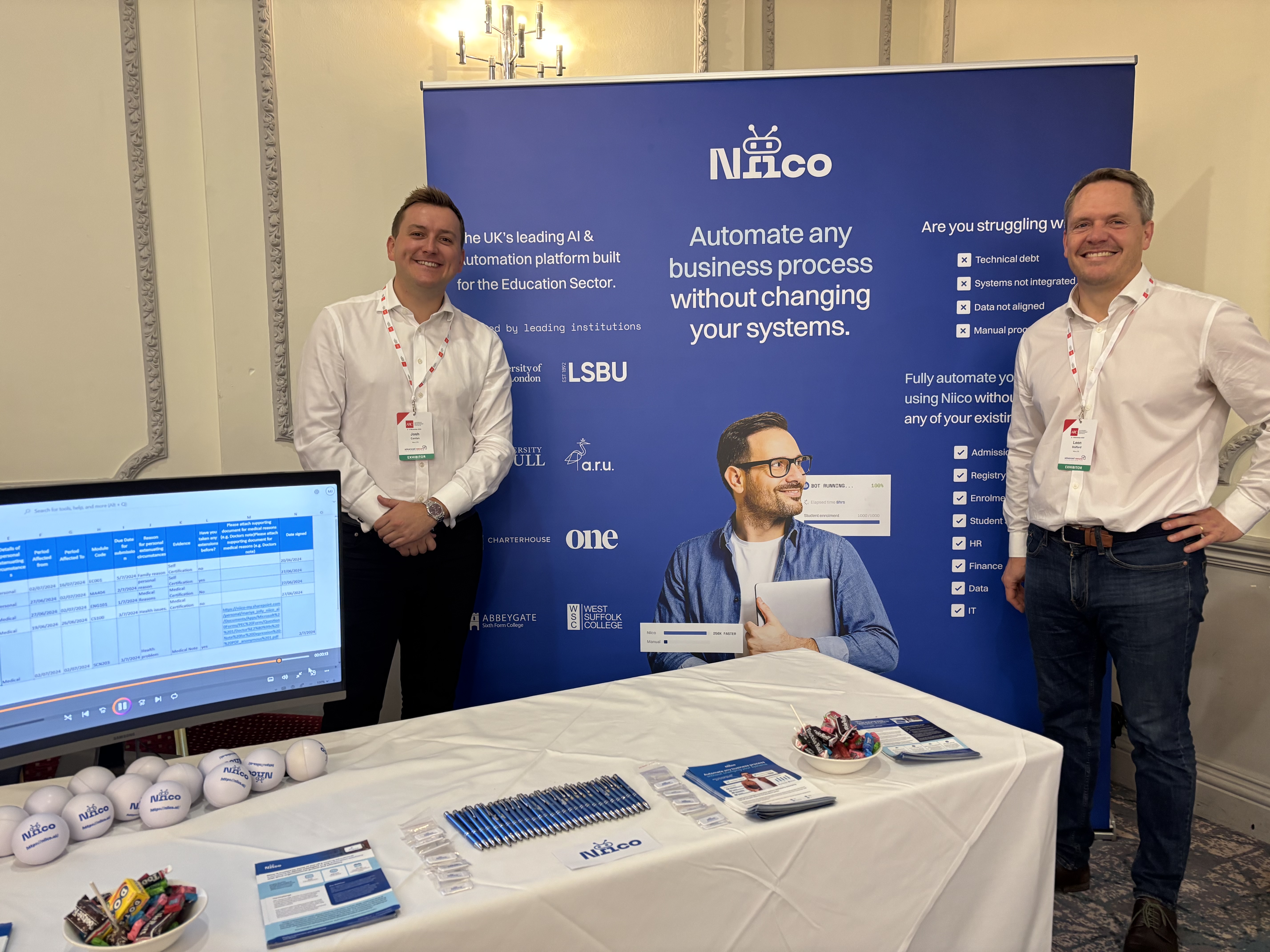The Future of NHS Recruitment: A Human and Digital Workforce
Blog

Let’s face it—recruiting staff for the NHS right now feels like trying to fill a leaky bucket. With over 110,000 vacancies, it’s no surprise that workforce planning is a huge concern. But while the focus has been on recruiting more healthcare professionals, there’s a shift that needs to happen: the NHS needs to starting thinking beyond just filling human roles. It’s time to build a workforce that blends people and digital technology seamlessly.
The key? Adopting a human and digital mindset in recruitment—planning around both human and digital workers.
Human Resources + Digital Resources = Future-Proof Workforce
Recruiting for the NHS is no longer just about filling vacancies—it’s about keeping up with a system that’s facing unprecedented pressure from all sides. In healthcare, it’s always been about the people—doctors, nurses, admin staff. But with increasing pressure on staff and limited budgets, relying solely on human resources won’t cut it anymore. We need to look at where Automation and AI fit into the picture to support and enhance the existing workforce, not replace them.
Automation and AI don’t go on holiday, never call in sick, and can handle repetitive tasks that bog down healthcare staff with superhero speed and accuracy. This frees up human workers to focus on the parts of the job they’re trained for—patient care. After all, no one became a nurse, doctor, or healthcare worker to spend 50% of their time on paperwork! Yet, that’s the reality for many. Instead of focusing on patient care, healthcare workers often find themselves swamped in admin tasks like scheduling, data entry, and report filing. It’s not what we signed up for and I think I speak for the entire NHS when I say that we’d all prefer a tea break (don’t forget the biscuits).
As one NHS nurse put it, “I didn’t spend years studying and training to spend most of my day doing admin. I want to be with my patients, not stuck in front of a computer.”
Shifting from Workforce Gaps to a Hybrid Workforce
Now, before you start imagining R2-D2 pushing carts around wards, let’s be clear—Automation and AI won’t be replacing your job. But they will handle the mountain of paperwork piling up on your desk.
Here’s where a human + digital mindset can make all the difference in NHS recruitment. Rather than focusing on human workers alone, Trusts need to plan for hiring digital colleagues as well. Automation and AI won’t replace staff, but they can fill the gaps and take on essential tasks that currently add to human workload.
Let’s talk numbers: As of March 2024, the NHS reported over 110,000 vacancies across its workforce, which represents about 7% of all NHS positions. The Royal College of Nursing estimates that the NHS needs an additional 45,000 nurses to meet current demand, with around 1 in 10 nurses leaving the NHS each year due to burnout and retirement.
The average time to hire a new NHS staff member is around 15 weeks (that’s 105 days or 2,520 hours… Eeek!), a significant delay that exacerbates workforce shortages. When those new hires finally settle in, staff churn is an ongoing issue, with 30% of NHS staff considering leaving within the first 12 months of employment. On top of that, reliance on temporary staff cost the NHS £6.2 billion in 2021, further straining budgets and affecting continuity in care.
The NHS has made efforts to plug these gaps, increasing the number of medical school places and international recruitment, with 7,000 nurses from overseas joining the workforce in 2022 alone. However, the recruitment treadmill shows no signs of slowing, and without digital solutions, it’s hard to see how these numbers will improve quickly enough to meet the rising demand.
The cost-efficiency of adopting a hybrid workforce is clear. By integrating Automation and AI into daily operations, NHS Trusts can reduce recruitment costs, as fewer human roles are needed for repetitive, time-consuming tasks. Not only does this cut the time to hire, but it also reduces the reliance on expensive temporary staff, helping Trusts stay within their budgets while increasing operational efficiency. Imagine the potential savings if fewer hires were needed for admin-heavy roles, and more digital workers stepped in to assist with the workload.
But reducing recruitment costs isn’t the only benefit—this shift will make the NHS more resilient and adaptable to future challenges.
Benefits of a Hybrid Workforce
- Efficiency Gains: Automation can handle repetitive, time-consuming tasks, such as data entry or appointment scheduling, so staff can focus on high-value patient care.
- Reduced Burnout: Taking the pressure off staff by offloading administrative work to digital systems can significantly reduce stress and prevent burnout. Imagine a team of nurses spending more time caring for patients rather than battling paperwork.
- Scalability: A digital workforce is scalable—as demand increases, automation tools can be scaled up more easily than recruiting and training new staff. This is crucial in times of surge demand, like during a flu season or God forbid another pandemic wave.
- Better Resource Allocation: AI helps optimise staffing, ensuring that the right number of human resources are available when and where they’re needed most.
- Upskilling and Retraining Existing Staff: Rather than fearing job losses, existing NHS staff can be upskilled to manage and oversee these new digital tools. Retraining staff to work with Automation and AI not only helps retention but also empowers them to develop new, future-proof skills (and the training doesn’t take 15 weeks)
- Improved Patient Outcomes: It’s not just staff who benefit from a hybrid workforce—patients do too. Automation and AI can help improve patient outcomes by reducing errors, speeding up care, and providing more accurate data for clinical decisions.
The Global Perspective
If Kaiser Permanente and Ramsay Health Care can do it, surely we can too—after all, it’s not like the NHS is short on bright ideas, just free hands!
While this approach may still feel new to the NHS, other healthcare systems worldwide have already embraced Automation and AI. Kaiser Permanente in the US and Ramsay Health Care in Australia have implemented hybrid workforces with great success. These systems have seen improvements in operational efficiency, patient satisfaction, and staff retention, proving that a digital-human workforce can deliver results.
For example, Kaiser Permanente used AI to predict patient flow and optimise resource allocation, reducing wait times and increasing patient throughput. Ramsay Health Care implemented RPA to manage admin-heavy tasks, allowing clinical staff to focus on patient care and reducing staff turnover in high-pressure departments – productive and efficient!
Addressing Resistance to Change
I need to be clear, automation is not coming for your job—it’s coming for your paperwork!
Of course, adopting new technologies can bring resistance—whether it’s fear of job losses, learning curves, difficulty integrating systems, or data security concerns. These are valid concerns. Healthcare staff might worry that automation means their jobs are at risk, but the reality is far from that. Automation and AI are here to assist and enhance roles, not replace them. By addressing these concerns head-on and offering upskilling opportunities, Trusts can ensure staff feel supported and empowered by these changes, not threatened.
Additionally, when it comes to data security, the NHS needs robust data protection frameworks in place to ensure patient information remains secure. Trusts can learn from global counterparts like Kaiser Permanente, which successfully integrated AI while maintaining strict data security standards.
The Right Approach
It’s not about automating everything or replacing human workers. It’s about creating a balance—using technology where it makes sense and relying on human expertise where they are irreplaceable. The NHS needs to adopt a holistic approach that blends human skill with digital precision.
At the end of the day, building a workforce that combines the best of both worlds will make the NHS more resilient, efficient, and ready to meet the challenges ahead. The future of recruitment isn’t just about finding people—it’s about finding the right combination of people and technology.
Related articles
-
 Learn more
Learn moreNiico at the ARC Conference 2025: How Automation Is Reshaping Higher Education Operations
Niico joined leaders at the ARC Registrar Conference in Bristol to explore how automation is helping higher education institutions navigate resource pressures, LLE complexity, and growing operational demands. Here are the key insights, challenges, and opportunities Registrars shared.
-
 Learn more
Learn moreHow to Boost Your Institution’s Application with Seamless MFA Integration
Universities and educational institutions are prime targets for cyber threats, making robust security measures more essential than ever, making Multi-Factor Authentication (MFA) a key solution in safeguarding sensitive student and institutional data.
